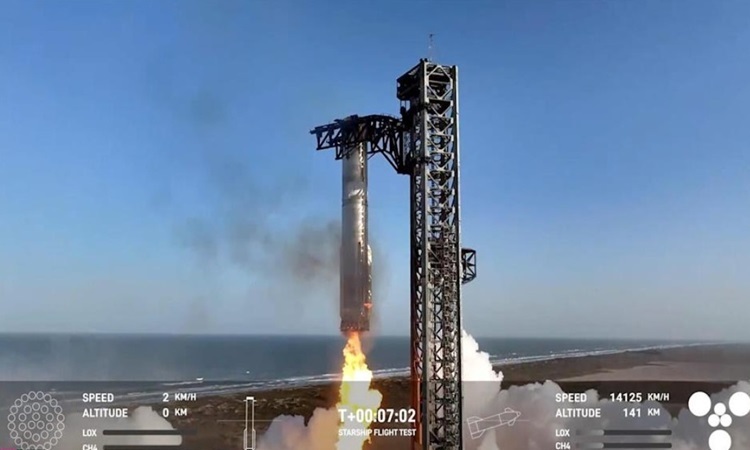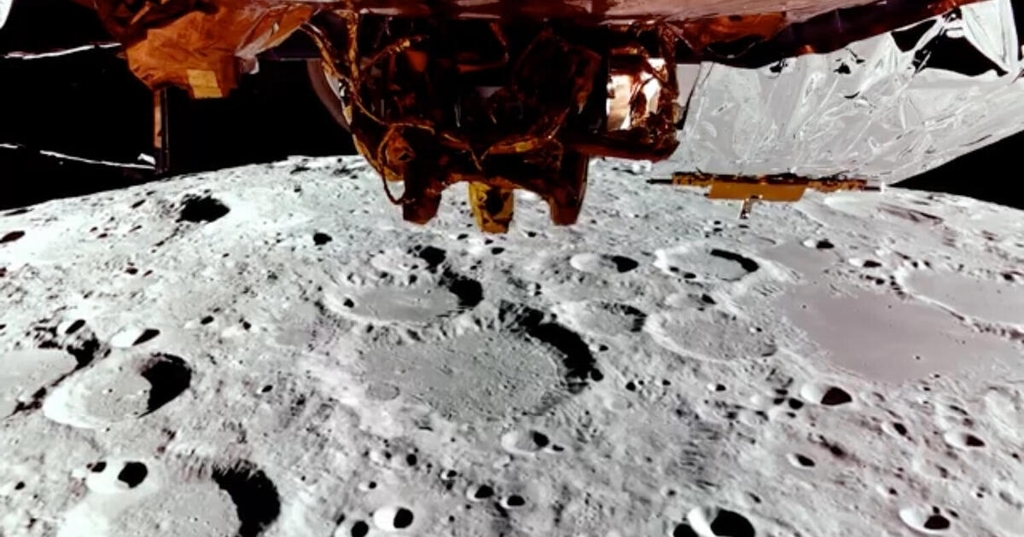Starship Explosion Disrupts Flights and Challenges SpaceX
Discover how the recent Starship explosion impacted flights in Florida and the lessons learned for future space exploration from SpaceX's challenges.

Key Points
- SpaceX
's Starship experienced a catastrophic failure shortly after launch, disrupting air travel in Florida and highlighting the challenges of space exploration.
- The Federal Aviation Administration
has mandated a thorough investigation before future test flights can occur, emphasizing the need for safety protocols.
- Despite setbacks, SpaceX remains committed to innovation, using failures as valuable learning experiences to improve future missions to the Moon and Mars.
In a significant event on March 6, 2023, SpaceX's highly anticipated Starship test flight ended in a spectacular explosion shortly after launch. This incident, which marks the second failed mission in just over two months, has raised questions about the future of one of the most ambitious private space endeavors in history.
Starship, touted as the largest and most powerful rocket ever constructed, is designed to serve a dual purpose: ferrying astronauts to the Moon, as part of NASA's Artemis program, and enabling missions to Mars. With a towering height of 123 meters, this rocket is equipped with 33 Raptor engines that propel it into the cosmos.

On launch day, after a successful initial phase where the Super Heavy booster detached from the spacecraft, things took a turn for the worse. Just 9 minutes into its flight, SpaceX lost communication with Starship as it began to spin uncontrollably, leading to the vehicle's destruction. This incident followed an earlier failure on January 16, when another Starship test resulted in debris falling into the ocean, fortunately without causing significant harm.
Operational Impacts and Safety Precautions
The aftermath of the latest explosion prompted immediate safety responses from the Federal Aviation Administration (FAA), leading to flight disruptions at several major airports in Florida, including Fort Lauderdale-Hollywood and Miami. This reflects the broader implications of space launch activities, where even test failures can have cascading effects on regional air travel. The FAA requires SpaceX to conduct a thorough investigation before future test flights can proceed, emphasizing the importance of safety in aerospace endeavors.
SpaceX's CEO,
, remains undeterred by these setbacks, expressing a commitment to identifying the root causes of the failures, which were attributed to issues such as engine cut-off and fuel leaks. In the face of adversity, industry professionals and enthusiasts alike are encouraged by Musk's resilience and the company's proactive approach to problem-solving.
Learning from Challenges
As SpaceX delves into analysis and review of the incidents, a broader lesson emerges for the aerospace industry: failure is an essential part of innovation and progress. Each unsuccessful attempt provides critical data that can lead to improvements in technology and operational procedures. This iterative process is crucial for developing reliable and reusable spacecraft capable of changing the landscape of space travel.
Moreover, NASA's collaboration with SpaceX is particularly telling of the industry's trust in the company's vision, despite these setbacks. NASA is relying on a revised version of Starship to transport astronauts back to the Moon, highlighting the importance of this spacecraft in humanitarian and exploratory missions.
The Road Ahead for Starship
Looking forward, SpaceX faces the challenge of improving its spacecraft to ensure future missions can achieve their goals reliably. The next steps will involve rigorous testing and modifications based on the data collected from the recent failures. As SpaceX works through these obstacles, its efforts serve as a testament to human ingenuity and the relentless pursuit of excellence in space exploration.
As we witness the developments in this exciting field, it is crucial for space enthusiasts and the general public to remain optimistic. Each launch, whether successful or not, brings humanity closer to realizing our dreams of interplanetary travel and exploration.

In summary, the explosion of SpaceX's Starship is a challenge that underscores the complexities and risks of space exploration. While setbacks can be discouraging, they also provide invaluable lessons that can fuel future progress. With continued perseverance and innovation, the day when humanity can explore the Moon and Mars may be closer than we think.


